REMEMBERING BABA SANYAL
Vijay Kowshik
Bhabesh Chandra Sanyal, the father of Modern Art in India (1902-2003)
- A journey from Lahore to Delhiby
Vijay Kowshik
Bhabesh Chandra Sanyal, the father of Modern Art in India (1902-2003)
Bhabesh Chandra Sanyal, known lovingly as Baba Sanyal,
passed on in January this year. He was 101 and the senior-most contemporary
artist of India who had been involved in the evolution of the Indian art
scene from the early twentieth century to the present twenty first century.
His contribution in the field of visual art and its promotion, nurturing and
encouragement was phenomenal. His passionate involvement, spirit of search
and perseverant thrust towards widening the outlook and attitude to the
arts, his in depth understanding of the life and times of the century and
his own self understanding was also immense.
Born in Assam at Dibrugarh on the 22nd April
1902, B.C. Sanyal was, and is still lovingly called Bhabeshda by his
colleagues and Sanyal Saab by his students. Anyone who met him felt
inadvertently drawn to his humane persona.
After studying under Percy Brown and J.P. Ganguly at the
Government College of Arts, Calcuttta, he came out and went to various
places in India looking, observing and absorbing the environment, trying to
see where he would ultimately like to settle down.
In 1929, he happened to go to Lahore to do a statue of Lala
Lajpat Rai at the AICC session and thought the place was interesting and
decided to try and stay on. He offered to make a portrait of Lionel Heath,
the then Principal of Mayo School of Arts, Lahore. Heath was impressed by
his work, his sincerity and perseverance, and appointed him at the College.
He taught at the school from 1929 to 1936. In 1936 Bhabesh Da, a handsome
and jovial young man (at the time) left the school as the principal’s
daughter fell in love with him and this was creating much complications.
This is the time when he founded the Lahore School of Fine Arts, a
studio-cum-teaching workshop for experiments in informal art education. The
studio was set up initially at the premises of the former Christian College,
at the invitation of its first Indian principal, Dr. S.K. Dutta. Later it
was formally inaugurated in a basement at the Dayal Singh Mansions with an
exhibition which included works from artists who were at Lahore during the
period, like A.R. Chugtai, Alla Bux, Roop and Mary Krishna, Hall Bevan
Petman, A. Hallet, Ram Lal, Siriniwas and B.P. Singlu, apart from his own.
Due to difficulties in keeping the venues because of tenancy
problems, the School had to shift a number of times. For some time the
School was at the premises of the Punjab Literary League’s club house.
This became an extremely lively place with interactions between the creative
fields of literature and fine arts. The school in 1938-39 shifted from the
clubhouse to the BallRoom of the Regal Cinema building on the Mall. This was
a big and central place and Sanyal’s studio bloomed here with a lot of
interdisciplinary interactions of the creatives of the time. There were
meetings of the progressive writers and discussions attended by A.S. Bukhari,
Sajjad Zuheer and Khwaja Ahmed Abbas. There were talks by luminaries like
O.C. Ganguly (on Indian miniatures), Rajani Palme Dutt (on Shakespeare),
Uday Shankar, Ram Gopal and Hafeez Jallundhari among others who graced the
studio. During the last few years at Lahore, Bhabesh Chandra Sanyal was
elected as the Secretary of the Punjab Fine Arts Society.
During the country’s Partition, Sanyal with his wife
Snehlata and tiny daughter Amba migrated to Delhi. This was a very testing
time for him and his family and they overcame the trauma of displacement and
started life afresh. He gelled well with the group of artists at Delhi at
the time. They were members of the All India Fine Arts and Crafts Society
but as it was being run like a fiefdom, Sanyal with a number of artists
walked out, and the first meeting of the new group being formed took place
at the Jantar Mantar grounds. The participants were B.C. Sanyal, Dinkar
Kowshik and K.S. Kulkarni. Many subsequent meetings took place at Kowshik’s
house at Allenby road where he used to stay at the time and which was very
central near Connaught place. It was decided that they would get more
artists involved and form a society. The Delhi Silpi Chakra was thus born
and the name coined by Kowshik who apart from being an artist from
Santinketan, was a graduate in English from Poona and knew Sanskrit. The
others who came into the folds were Kanwal Krishna, Shankar Pillai, Jaya
Appasamy, K.C. Aryan, Ram Kumar, Dhanraj Bhagat and P.N. Mago, among others.
B.C. Sanyal had the qualities of a good leader among the
artists and the Delhi artists gelled well with him. It was a completely new
art scene developing at Delhi and the country for that matter at that time.
‘Silpi Chakra’ as the society was commonly known, started having regular
exhibitions, discussions, talks and invigorating interactions between
creative art fields of visual arts, literature and music. With the
sympathetic collaboration under Sanyal’s persuasion, Ram Babu of M/s
Dhoomimal Dharamdas at Connaught Place started the first commercial art
gallery of Delhi. Later the Silpi Chakra got its own premises at the Shankar
market at Cannought place which had just come up then.
Bhabesh Sanyal took over as the head of the Art Department
at Delhi Polytechnic (1953-1960), and the Department made a great headway.
Later as the Secretary of the Lalit Kala Akademi (1960-69) he brought in
great changes and endeavoured to enrich the activities of the Akademi and
touched the lives of artists all over the country.
His love of the mountains took him to the valleys of
Himachal and he initiated and formed the ‘Woodland Society’ for artists
at Andretta on the land given by Nora Richard for the purpose.
I remember every once in a while my father Dinkar Kowshik,
taking our family to his house at Nizamuddin(east) and in my child’s eyes
he was like my father’s older brother and his daughter Amba was the most
beautiful girl in the world and I was so proud she was like my elder sister.
His wife Sneh di was a confident young lady who had deep interest in theatre
and had very clear opinions on most issues. His studio at Gole Market was to
a great degree instrumental in nurturing artistic activity in Delhi after
1947, many a now- famous artists bloomed through that studio. There was a very beautiful portrait of
Amba, which Baba Sanyal had made and which is reproduced here among some
other virile works of his.
This veteran artist’s major qualities were, his strength
of character, honesty, perseverance and his wit and humour. These were the
main tenets of his humane nature and his leadership qualities because of
which people from all echelons were attracted to and looked up to him. His
works portray the same qualities of strength and sensitivity. They have the
spiritual strength of a person who in spite of the tensions of the inner
self and the external forces has a clear mind and a direction. In his works
there is a unity of painting and drawing. It has an organically flowing
foreground and the elements in the background bind together. The way he
deals with forms, space, colour and light strikes me like lightning -
differently vibrant each and every time. His works may also be described as
‘relational’ because it establishes a strong relationship with the
characters and feelings of people and the context. The canvas and the paint
were but an instrument in his deft and precise fingers for his research into
the nature of being.
Even after going through a century in time, Baba Sanyal kept
his youth and the attitudes to match. His mind was agile and he was
interested in any new development taking place. For example when the various
techniques of working in glass were explained to him in his 100th
year, he had a keen desire to work in glass and do compositions in the
medium. He had the uncanny quality of finding humour in any situation and
liked to interact after having his own private space for himself in his mind
where he continuously introspected.
He had a cultured wit and a civilized humour, which was
mild, but deep and profound. His landscapes, a lot of which were done in the
Dhauladhar and Shivalik ranges in Himachal, have the dreamlike quality which
his subconscious must have perceived but still they are connected to the
conscious with regard to being intelligible. The spontaneity and strength of
his strokes are vibrantly depicted in his studies of birds and animals
specially the virile cat and the alert black crow done by him. His
sculptures are also a pleasure to experience and confirm the fact that his
enduring spirit is always young, fresh and reaching out. It has no
relationship to the physical years. This spirit of his had touched many a
heart and minds who carry forward the flame which has its origins in the
depths of Baba Sanyal’s heart.
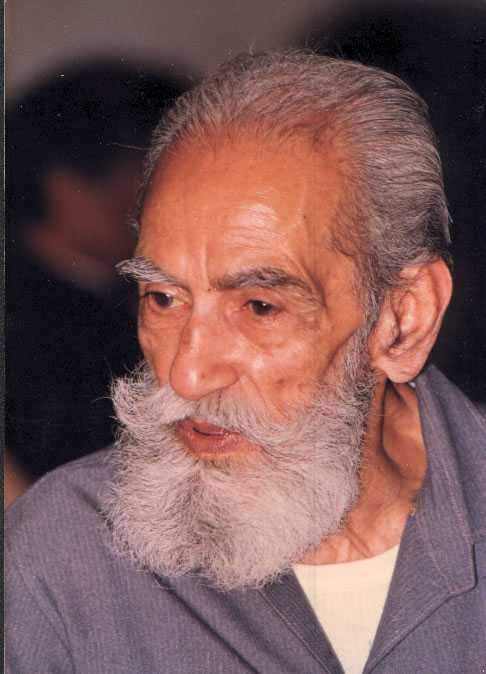
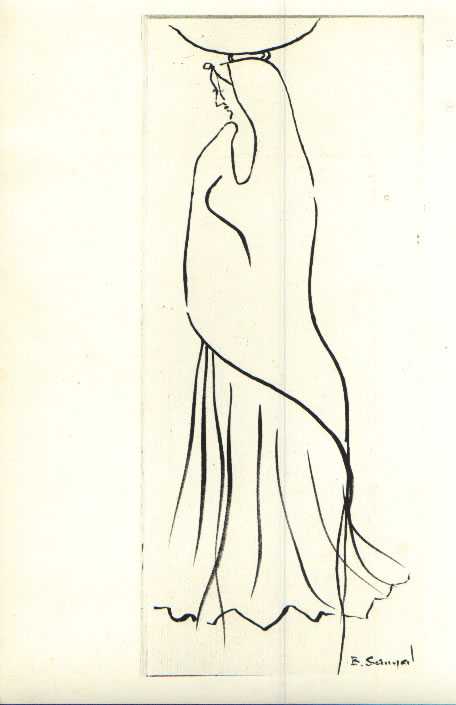
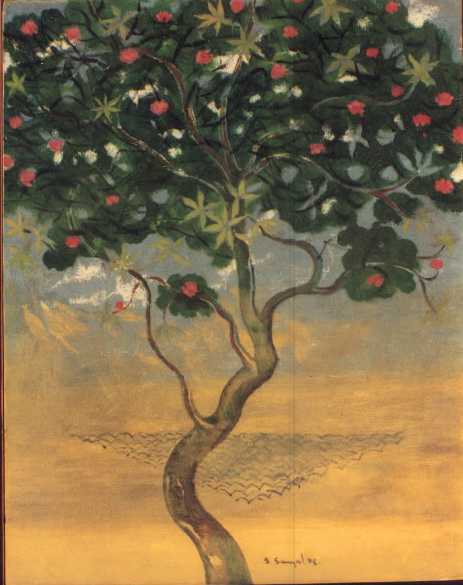
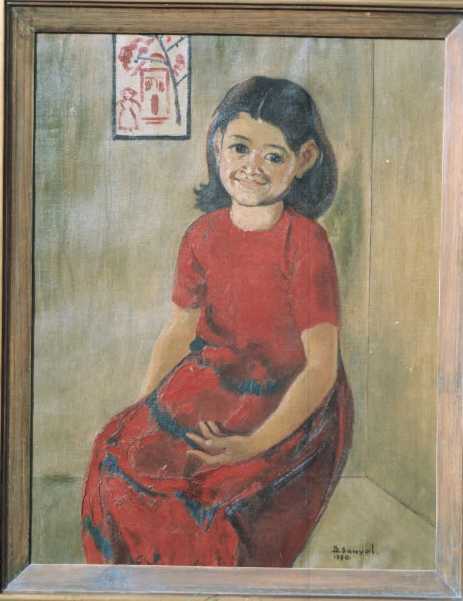
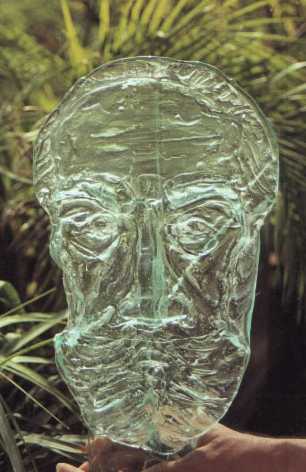
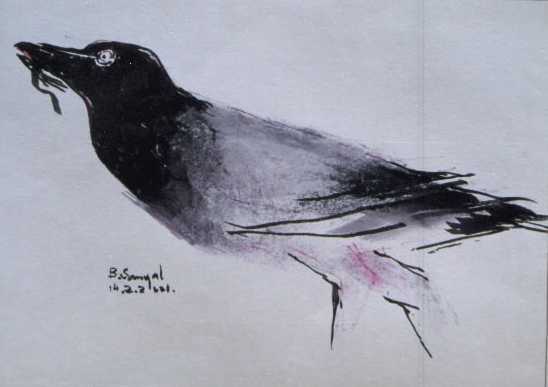
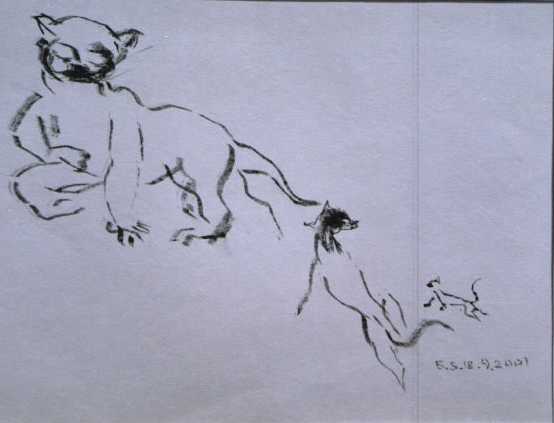
No comments:
Post a Comment